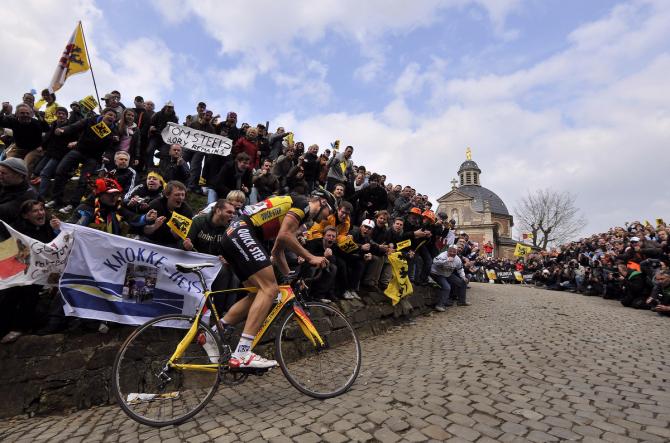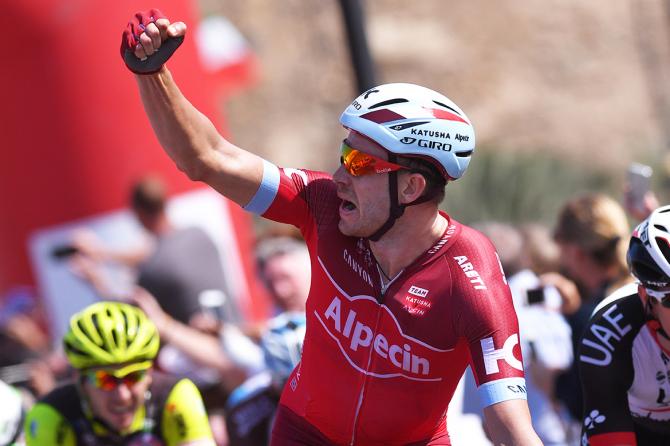Tour of Flanders 2017 preview
Sagan and Van Avermaet emerge as favourites ahead of De Ronde
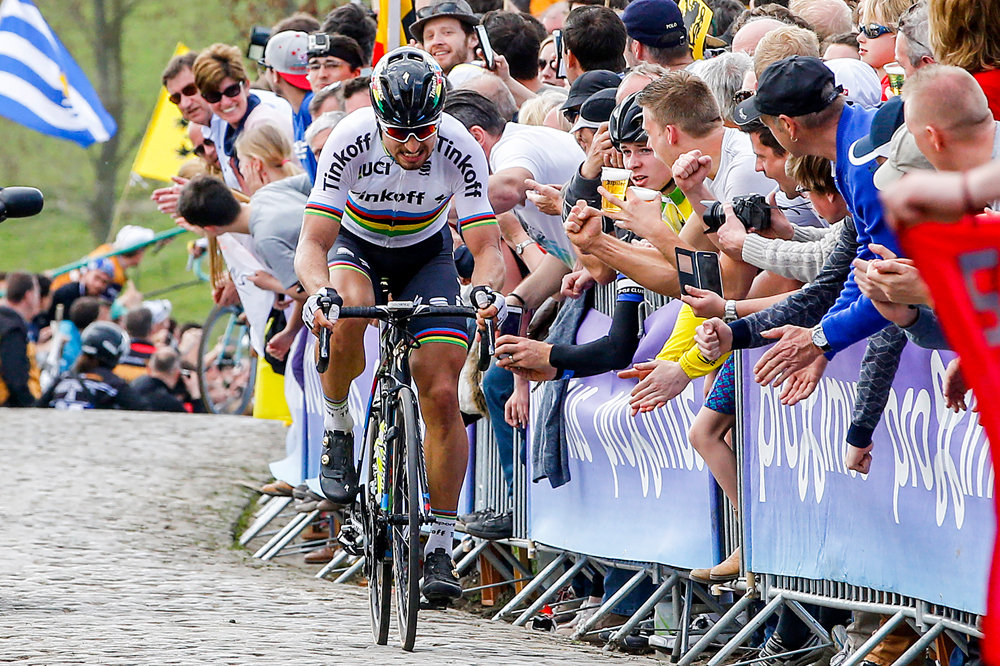
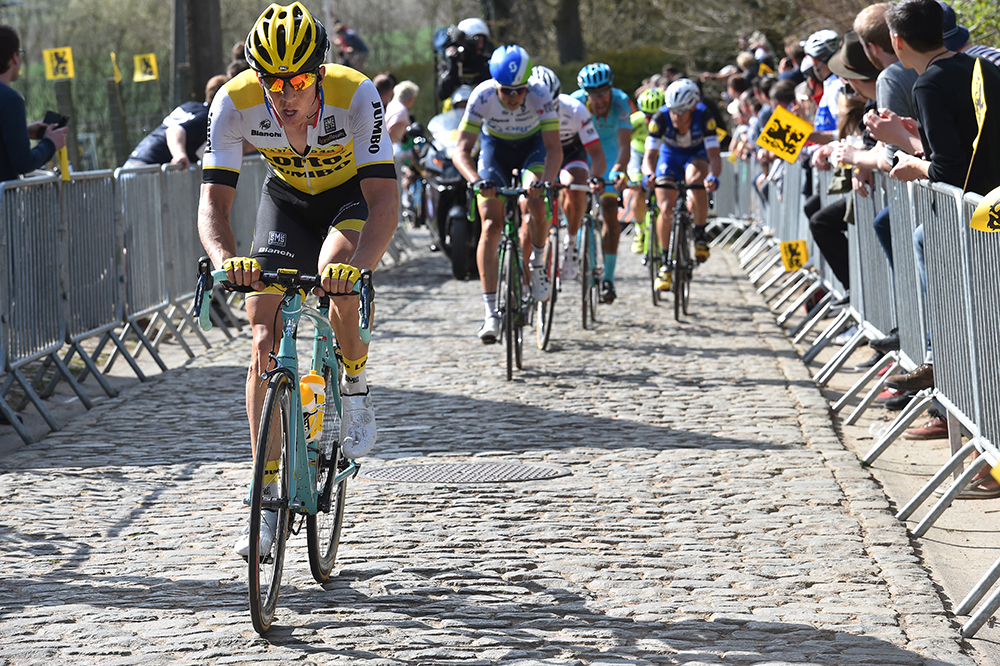
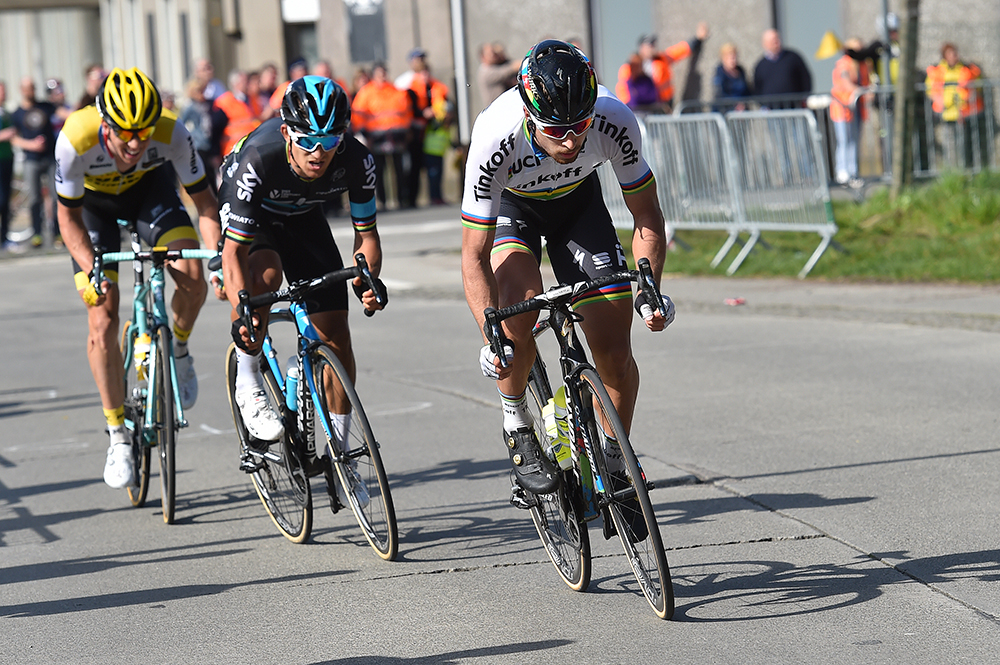
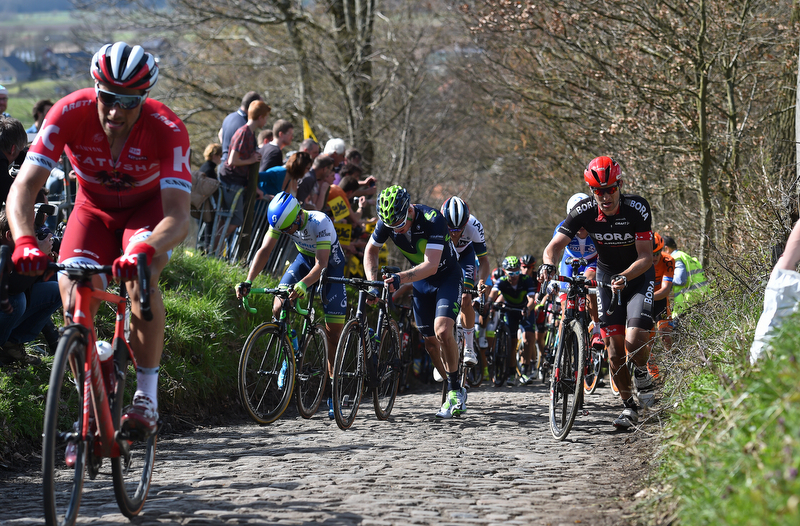

The first Sunday of April is sacred in Flanders. The region has been the epicentre of the cycling world over the past couple of weeks but it has all been geared towards this day: Ronde Van Vlaanderen day. This isn't any old day but neither is it any old Ronde; it's Tom Boonen's final Tour of Flanders. The handkerchiefs are on hand, the newspapers have been stuffed with 'Tommeke' features and pull-outs and Flanders is ready to bid farewell to its favourite son.
The final race of the Quick-Step rider's career will come a week later at Paris-Roubaix, with the 36-year-old explaining earlier in the year that the Hell of the North is the race that means the most to him, and that the Ronde is "just another loop in Flanders". Ouch. But if there's a Flandrien who can get away with such a comment it's Boonen, who has built up a public appeal and star quality as strong as his palmares.
But Boonen doesn't go into his final Flanders as he has done so many of the others – as one of the top favourites. He himself has admitted as much. Instead, it's another Flandrien, BMC's Greg Van Avermaet, who sits at the top of most people's lists, with barely a pedal stroke out of place on the cobbles this year. Of course, last year's winner Peter Sagan is right up there, though it has become increasingly clear that the world champion's remarkable strength might in fact be his biggest weakness. There was no one who could stop him as he rode away on the Paterberg and soloed to the line 12 months ago, but rivals are often so afraid of working with him that he either has to over-work himself and sap his sprint or refuse to shoulder the burden and let the race slip away.
That's exactly what happened at Gent-Wevelgem, where Bora-Hansgrohe's Sagan accused Niki Terpstra of playing a "cheap game", though his comments are not likely to change anything, with Quick-Step DS Wilfried Peeters telling Cyclingnews this week that his riders would not give 100 per cent to the cause in a move with Sagan, adding: "If we don't win then he loses."
Sagan, then, is likely to be the pivot at the centre of a fascinating tactical battle, though at De Ronde you need to have strong legs just to be in with a chance of playing tactics, with the 260km route and 18 short but steep climbs habitually seeing the strongest legs rise to the top.
And it's these climbs in the so-called Flemish Ardennes – the hellingen, as they're known – that characterise the race, now in its 101st edition. Short, often cobbled, always punishingly steep, and lined with cycling-obsessed locals who've been drinking Belgian beer since the early hours, they provide some of the most dramatic – and certainly the most atmospheric – racing of the season.
The route
Just another loop in Flanders? There's a bit more to it than that, but Boonen's right in a way, the race is characterised by the hellingen and kasseien – cobblestone sectors – of the so-called Flemish Ardennes, many of which were used last week and during the opening weekend in February. And there's little change to the balance of the route from last year, with the final 75km pretty much identical.
The latest race content, interviews, features, reviews and expert buying guides, direct to your inbox!
There are, however, some big alterations. First and foremost, the race will not start in Bruges, as it has done for almost 20 years, but instead in Antwerp, some 90km east. Gone is the morning build-up in Bruges' market square. What will certainly change is the path to the hills and cobbles of Flanders, with the route taking in seven of what it labels 'villages of the Ronde' – places that have some sort of association to the race – on its way through the gap between Gent and Brussels. One of them is Sint-Niklaas, the old start town, and another is Hamme-Zogge, birthplace of Van Avermaet, but they won't have much significance beyond the ceremonial significance as they all come in the flat and tarmacked opening 80km.
Tom Boonen on the Muur van Geraardsbergen
Another notable change is the return of the Muur van Geraardsbergen, also known as Kappelmuur – it leads up to an iconic chapel at the top of the hill – or simply the Muur. This climb, with gradients touching 20 per cent, is one of the most emblematic of the race and, during its near-quarter of a century as the event's penultimate climb, played host to some of the Ronde's most memorable moments. It was cruelly axed in 2012, however, when the organisers moved the finish from Meerbeke to Oudenaarde.
It's back for 2017, though not in its old spot. Positioned some 95km from the finish, it's unlikely to have the impact it used to, though a huge swathe of fans is still expected to make the pilgrimage to its holy slopes. "The Vesten [approach road] and the Muur are for the people. No VIP tents, so fries and beer instead of caviar and champagne," said Guido De Padt, Mayor of Geraardsbergen.
The fancy stuff is reserved for the Muur's usurper as the penultimate climb, the Oude Kwaremont, which has been the focal point of the race in the last few years. It appears three times on the route, and its last two appearances see it paired with the punishingly steep Paterberg a few kilometres later. The combination comes for the first time with just over 50km to go, while the second pairing represents the end game, preceding the 13km run to the line.
The Oude Kwaremont is also the first of the 18 hellingen on the menu, the same number as last year, with the Ten Bosse and Pottelberg joining the Muur in replacing the Molenberg, Valkenberg and Kaperij. Despite the changes, the organisers wanted to retain the 'rhythm' of the race from previous years, and the final 75km and final nine climbs are practically unchanged from a year ago.
Of the final nine, first comes the Kanarieberg, then the first Kwaremont-Paterberg double, followed just over 6km later by the spectacular Koppenberg, short but brutally steep, cobbled, and narrow. The flat cobbled sector of the Mariaborrestraat gives way to the Steenbeekdries climb and the Taainberg, also known as 'Boonen-berg' thanks to the Belgian's penchant for accelerating away there. After that the Kruisberg comes in the middle of an otherwise benign 20km stretch, and then it's time for the second installment of the Oude-Kwaremont-Paterberg combo, where the race will explode once more ahead of the finely-poised run to Oudenaarde.
The climbs:
Oude Kwaremont (115 km)
Kortekeer (126 km), Eikenberg (133 km)
Wolvenberg (136 km)
Leberg (145 km)
Berendries (149 km)
Tenbosse (154 km)
Muur van Geraardsbergen (165 km)
Pottelberg (183 km)
Kanarieberg (189 km)
Oude Kwaremont (205 km)
Paterberg (209 km)
Koppenberg (215 km)
Steenbeekdries (220 km)
Taaienberg (223 km)
Kruisberg (233 km)
Oude Kwaremont (243 km)
Paterberg (247 km).
The cobbled sectors:
Lippenhovestraat (84 km)
Paddestraat (86 km)
Holleweg (136 km)
Haaghoek (142 km)
Mariaborrestraat (219km)
The contenders
Peter Sagan bludgeoned his way clear on the Paterberg last year, making Sep Vanmarcke look like he was going backwards, and the world champion is the bookmakers' favourite, though not a clear one. Indeed Van Avermaet, once the nearly man of Belgian cycling, carries the hottest form into De Ronde, having won both E3-Harelbeke and Gent-Wevelgem last week, and Omloop Het Nieuwsblad before that.
Sagan and Van Avermaet are the clear top two, as Quick-Step DS Wilfried Peeters conceded, though for many the top bracket does extend to a third rider. Quick-Step's Philippe Gilbert has returned to the cobbles after being forced to ride the Ardennes while at BMC, and has looked even more impressive than when he rode these races in the early phase of his career, when he twice finished on the Flanders podium. Second – behind a teammate – at Dwars door Vlaanderen, second at E3-Harelbeke, and utterly dominant on the opening stage of the Three Days of De Panne, which included two ascents of the Muur, he has probably emerged as Quick-Step's greatest hope.
And perhaps having a clear figure at the top of the pecking order is exactly what Quick-Step need. They always have remarkable strength in depth that's the envy of all other teams but it can sometimes also be a hindrance: With so many options available it's not always easy to settle on the right one. So Gilbert leads Quick-Step but they also have Niki Terpstra and Zdenek Stybar as big attacking threats, while Matteo Trentin packs a fast finish. And we haven't even got round to Boonen. He says his chances of a fourth Ronde title aren't as great as a fifth Roubaix next week, but what a storyline that would be. In any case, simply seeing him on the front foot, animating the race, attacking on his final time up the Taaienberg, will be perfectly sufficient for the Belgian public.
Alexander Kristoff has found form at the right moment
After that there are plenty of contenders who are hard to read. Katusha-Alpecin's Alexander Kristoff is a former winner of the race but has had a disappointing spring so far and doesn't consider himself a favourite for Sunday. Teammate Tony Martin, who looks an instant natural on the cobbles could even be the stronger of the Katusha duo, though it's hard to see him finishing the race off. Cannondale-Drapac's Sep Vanmarcke, the de facto Belgian nearly-man since Van Avermaet's turn of fortunes, always plays a big part in these races, but he has been troubled by a rib issue and also by sickness in the last couple of weeks.
Trek-Segafredo's John Degenkolb was the strongest on the Kemmelberg behind Van Avermaet and Sagan at Gent-Wevelgem, and he should be a threat, though his directeur sportif Dirk Demol pulled no punches when explaining to Cyclingnews that he needs to display the killer instinct of Fabian Cancellara if he's to put himself in the right moves and in a position to win the race.
Tiesj Benoot burst onto the scene here a couple of years ago with fifth place as a neo-pro, and while there's no doubt he'll be one of the strongest in the race, there are still question marks over whether he's a true winner, with no victories as yet on his palmares. He leads Lotto Soudal alongside a Tony Gallopin still hurting from a crash at E3, with the Belgian team in dire need of a decent performance after a spring of anonymity so far.
One Belgian whose form is easier to read is Oliver Naesen. The 26-year-old, who put in some eye-catching performances for IAM in the back end of last year, moved to AG2R this season for a Classics leadership role and has finished in the top 10 of Omloop, Kuurne and E3. Indeed, at E3 he joined Van Avermaet and Gilbert in the race-winning three-man move and almost pulled it off with a strong early sprint. He has to be seen as one of the key riders in the bracket below the top three.
Luke Durbridge is another young rider who has shown consistently strong form over the past couple of weeks. He was fourth at Dwars and E3 and finished second behind Gilbert on that opening stage of De Panne, where he also won the time trial. He's a strong rouleur but has shown he can now absorb the climbs and sense the right moves to track, and it wouldn't be a surprise to see him in the top 10. Nor would it be a surprise to see his Orica-Scott teammate Jens Keukeleire, runner-up at Gent-Wevelgem, in there either.
Team Sky have a strong duo on paper, in the form of Luke Rowe and Ian Stannard but since Michal Kwiatkowski's Milan-San Remo victory they've had almost no impact whatsoever on races this spring.
Patrick is a freelance sports writer and editor. He’s an NCTJ-accredited journalist with a bachelor’s degree in modern languages (French and Spanish). Patrick worked full-time at Cyclingnews for eight years between 2015 and 2023, latterly as Deputy Editor.
